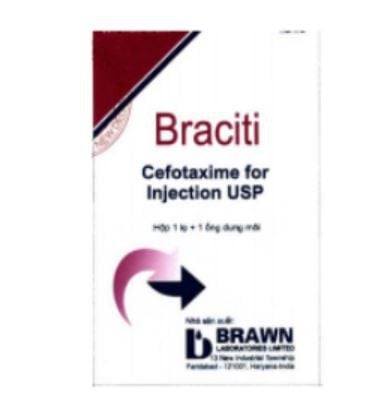This is an automatically translated article.
Carbapenem is classified as a beta-lactam antibiotic. This is a carbapenem antibiotic with broad-spectrum bactericidal activity. The following are some information to note when using Carbapenem antibiotics that users should know before using.
1. Carbapenem's Mechanism of Action
Carbapenem antibiotics are a group of antibiotics whose main action is to kill bacteria through binding to penicillin-binding proteins. From there, it helps to inhibit the transpeptidase enzyme that catalyzes the formation of cross-links between peptide chains attached to the peptidoglycan framework, leading to inhibition of bacterial cell wall synthesis.2. The effect of the drug Carbapenem
Because of the broadest antibacterial spectrum of beta-lactam antibiotics, carbapenem drugs (including imipenem, meropenem, doripenem) are effective against gram-positive, gram-negative and anaerobic bacteria. Despite this, carbapenem has no effect on Enterococcus faecium, methicillin-resistant Staphylococcus aureus (MRSA) and Stenotrophomonas maltophilia.
The effect of Carbapenem (imipenem, meropenem) is to use in moderate to severe infections in nosocomial infections and simultaneous infections with many bacteria. Clinical trials have demonstrated the efficacy of imipenem and meropenem in the treatment of moderate to severe infections including:
Intra-abdominal infections; Hospital-acquired pneumonia; Sepsis ; Symptoms of leukopenia accompanied by fever. Meropenem is indicated for use in the treatment of meningitis, but imipenem is contraindicated because of the risk of convulsions.
Doripenem is the latest carbapenem antibiotic approved by the US FDA in 2007. Doripenem is indicated for use in the treatment of complicated intra-abdominal infections and complicated urinary tract infections, including pyelonephritis and pyelonephritis. .
3. Note when using antibiotics Carbapenem
All Carbapenems are poorly absorbed orally, so they can only be used by injection. The half-life of carbapenems (including imipenem, meropenem, doripenem) is about 1 hour, so Carbapenem needs to be taken at least 3 times a day. Both imipenem and meropenem can penetrate the cerebrospinal fluid in patients with meningitis because these carbapenems have large volumes of distribution and penetrate well into infected tissues or organs. Dosage adjustment or dosing interval should be considered when Carbapenem is used in patients with impaired renal function. Because patients with end-stage renal failure will undergo hemodialysis, imipenems, cilastatins, and meropenems are significantly eliminated by dialysis, but only a small amount of imipenem is eliminated by peritoneal dialysis (approx. 3-5%). Imipenem is not suitable for prolonged infusion, approximately 3-4 hours, because of its poor stability in reconstituted solution. Like Imipenem, Meropenem is also not suitable for prolonged infusion because of its lack of stability. When diluting Doripenem at room temperature, the stability of the solution is about 12 hours. With this high stability, Doripenem is used in prolonged infusion to improve efficacy and minimize bacterial resistance.
4. Safety of carbapenem antibiotics
Carbapenems are generally safe and well tolerated by the infusion line, however, it is important to adjust the dose accordingly for each carbapenem. Since Imipenem has a potential for convulsions, the total recommended daily dose should not exceed 50 mg/kg/day or 4 g/day in subjects with perfectly normal renal function. Side effects caused on the gastrointestinal tract can be symptoms such as nausea or vomiting, diarrhea. These side effects will depend on the patient's dose; Meropenem is safer than Imipenem because the risk of seizures is lower at high doses than Imipenem. Meropenem causes gastrointestinal side effects that are independent of dose. With the safety when used at high doses and the lower toxicity caused on the nervous system, Meropenem is indicated for use in the treatment of meningitis; Doripenem has the least risk of seizures compared with other carbapenems. Common side effects are gastrointestinal symptoms such as nausea or vomiting, diarrhea.
Please dial HOTLINE for more information or register for an appointment HERE. Download MyVinmec app to make appointments faster and to manage your bookings easily.













